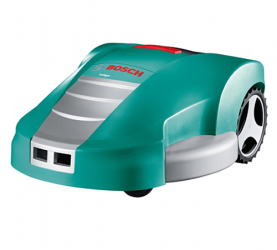
Robotic lawn mowers seem like the answer to your garden-chore prayers, but are these labour-saving machines the right solution for your lawn? The obvious benefit of a robotic lawn mower is the time saved cutting the grass, as once it is installed it can be largely left alone; most models return to their docking station when they run out of charge, and some can be controlled via a smartphone app, meaning you can mow your lawn even while you are on holiday.
Thank you for reading this post, don't forget to subscribe!
The obvious drawback to a robotic lawn mower is the set up and installation time. While the technology is impressive, the robot mowers still need to be set up in their new environment, with guide wires staked into the ground to define the mowing area, and the docking station to be installed and introduced to the mower. Once this is all done, which can take several hours, the perimeter must be tested to ensure the wires are in the right place and that the robot mower can find its way around. This testing and tweaking can take a while too, so by the time the robot mower is fully set up it could have taken the best part of a day.
Robotic lawn mowers can, generally speaking, be left to run on a normal flat lawn without any problems. However, patches of uneven ground or areas where rabbits are likely to dig can present a problem for the robot mower. The wheels become stuck quite easily in small holes and without human intervention the mower will get stuck and turn over the grass until the power runs out, leaving the job unfinished. If your garden has uneven terrain you should probably avoid a robotic lawn mower and stick with a traditional one instead.
The cut left by most robotic lawn mowers is even, yet a lot rougher than with a traditional lawn mower. The finish does not have straight lines, as the robots tend to wander randomly within the perimeter, cutting as they go. This means that sometimes the same patch of grass is passed over several times, leaving the cut edges ragged and prone to disease and drying out. Conversely, with the traditional option the cut is a lot cleaner and the straight-line finish is easily achieved.

Another thing to consider is the cost of a robotic mower. Even if you have the right terrain for automated mowing, the cost of buying a robotic lawn mower is a lot higher than the equivalent level traditional lawn mower; even a self-propelled model that takes out the manual work from mowing the lawn.
Robotic mowers are quite a lot smaller than traditional lawn mowers, so for smaller lawns with shrubs or other features they can be quite attractive. They also take up less space in storage (and are generally stored outdoors under shelter so they can mow when required) so they are quite an attractive option for those who are time-poor and cash-rich, who tend to have the neat level lawns served well by a robotic lawn mower.
For many of us though, the cost and initial set up time are enough of a hurdle, so a robot mower might only be the best choice when you have the right terrain and the need to save a lot of time over the longer term. The self-propelled option certainly saves a lot of the manual work associated with mowing the lawn, and therefore some time, and the end result will be much neater.
